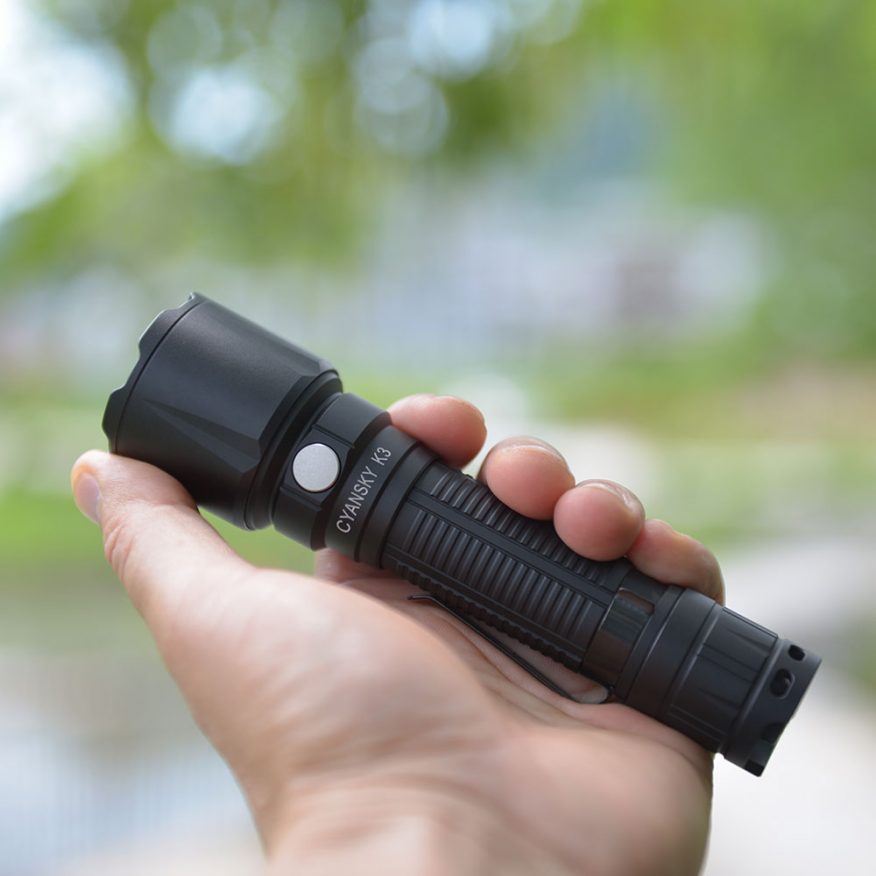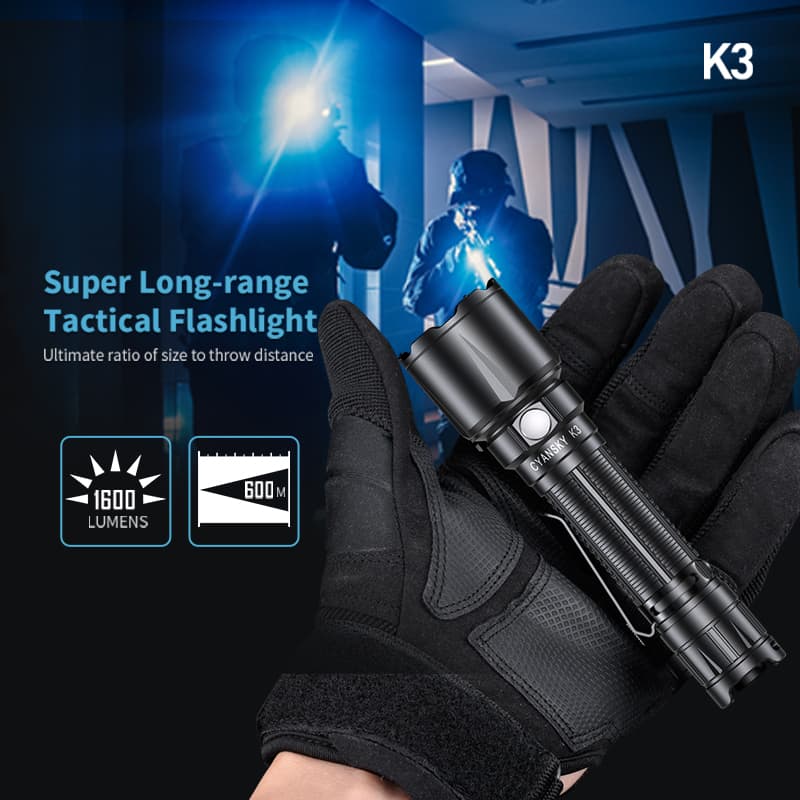Exploring Self-Defense Tools
When it comes to personal safety, having the right self-defense tool is crucial. In today's world, where threats can arise unexpectedly, being prepared with effective protective devices is essential. Self-defense tools come in various forms, each offering unique advantages and considerations. From traditional options like pepper spray and stun guns to modern innovations such as flashlights and lasers, there are numerous choices available. This section will explore different self-defense tools, highlighting their features and discussing their suitability for personal safety needs.
Shedding Light on Flashlights
Flashlights are versatile tools that can be used for self-defense purposes. One of the primary benefits of flashlights is their ability to provide a bright light source, which can disorient an attacker. When faced with a sudden beam of intense light, an assailant's vision may become temporarily impaired, giving you a crucial advantage.
In addition to their blinding effect, flashlights offer other advantages as self-defense tools. They are portable and easy to carry, making them convenient for everyday use. Whether you're walking alone at night or navigating through dimly lit areas, having a handheld light can enhance your sense of security.
However, it's important to consider the drawbacks of using flashlights for self-defense. To effectively use a flashlight as a defensive tool, you need to be in close proximity to the attacker. This means that if an assailant is already within striking distance, relying solely on a flashlight might not provide enough time to react and defend yourself adequately.
Furthermore, flashlights may not be suitable for all situations. In outdoor environments with ample lighting or well-lit public spaces, the disorienting effect of a flashlight may be less effective. It's essential to assess your surroundings and determine whether a flashlight is the most appropriate choice based on the level of illumination and potential threats present.
Analyzing Laser as a Self-Defense Option
Lasers can be a compelling self-defense option, offering unique advantages in certain situations. One of the primary benefits of lasers is their long-range capability. Unlike flashlights or other handheld devices, lasers can emit a focused beam of light that can reach targets at a distance. This makes them particularly useful for individuals who need to defend themselves from afar.
Precision targeting is another advantage provided by lasers. With a laser pointer or beam emitter, you can accurately direct the light towards an attacker's eyes, temporarily blinding them and potentially gaining valuable time to escape or seek help. The concentrated nature of laser beams enhances their effectiveness in disorienting assailants.
However, it's important to acknowledge the limitations of using lasers for self-defense. Proper training is crucial to ensure effective use and prevent accidental harm. Without adequate knowledge and practice, it may be challenging to aim the laser accurately or use it in high-stress situations effectively.
Additionally, it's essential to consider legal and practical aspects before relying on lasers for self-defense. Laws regarding laser pointers vary across jurisdictions, with some places imposing restrictions on their power output or prohibiting certain uses altogether. It's crucial to familiarize yourself with local regulations and ensure compliance when considering lasers as a personal safety tool.
Comparing the Effectiveness of Flashlights and Lasers
When comparing the effectiveness of flashlights and lasers as self-defense tools, it's important to consider their unique characteristics and applications.
Flashlights can provide a temporary advantage in self-defense situations by disorienting an attacker. The bright light emitted by a flashlight can momentarily blind or confuse an assailant, giving you a crucial opportunity to escape or take further action. Flashlights are particularly effective in close-quarters situations where physical proximity is necessary for their disorienting effect to be fully utilized.
On the other hand, lasers offer distinct advantages in terms of range and precision targeting. With their long-range capability, lasers allow you to maintain a safe distance from potential threats while still being able to impair an attacker's vision. The concentrated beam emitted by a laser pointer or beam emitter can accurately target an assailant's eyes, temporarily disabling them and providing an opportunity for escape.
Both flashlights and lasers have their strengths and limitations when it comes to self-defense. Flashlights excel in situations where immediate proximity is required, such as dark alleys or enclosed spaces. They are versatile tools that can also serve various purposes beyond self-defense. However, they may not be suitable for all scenarios, especially those with ample lighting.
On the other hand, lasers offer a long-range advantage and precise targeting capabilities. They can be particularly useful when dealing with potential threats from a distance or when maintaining personal safety without direct physical contact. However, proper training is essential to ensure safe and effective use of lasers as self-defense tools.
Ultimately, the choice between flashlights and lasers as self-defense tools depends on your specific needs, environment, and comfort level with each option.
Factors to Consider and Making an Informed Decision
When choosing a self-defense tool, it's important to consider several factors to make an informed decision that aligns with your personal safety needs.
Firstly, evaluate your environment and potential threats. Different situations may require different tools. For example, if you frequently find yourself in dimly lit areas or secluded places, a flashlight may be more suitable. On the other hand, if you need a long-range option or want to maintain distance from potential threats, a laser might be a better choice.
Secondly, assess your comfort level and ability to handle the chosen tool. Some individuals may feel more confident and capable using certain self-defense tools over others. Consider factors such as size, weight, ease of use, and any necessary training required for effective use.
To make an informed decision, research and compare different self-defense tools available in the market. Understand their features, advantages, and limitations. Reading reviews from reputable sources can provide valuable insights into real-world experiences with these tools.
Additionally, seeking professional advice and training can greatly enhance your understanding of self-defense tools and their proper usage. Experts can provide guidance on selecting the most appropriate tool based on your specific needs and offer training sessions to ensure you know how to effectively utilize it.
By carefully considering these factors and gathering relevant information, you can make an informed decision when selecting a self-defense tool that best suits your requirements.
Factors to Consider and Making an Informed Decision
Choosing the best self-defense tool requires careful consideration of various factors. It's essential to evaluate the benefits, drawbacks, and effectiveness of each option before making a decision. By weighing these factors, you can select a self-defense tool that aligns with your personal safety needs and preferences. Remember to consider your environment, potential threats, comfort level, and ability to handle the chosen tool. Conduct thorough research, compare different options, and seek professional advice or training if necessary. Making an informed decision empowers you to confidently select a self-defense tool that enhances your personal safety.
See Also
Convenient and Hands-Free: The Multi-Color LED Flashlight for Outdoor Excursions
Optimal Solar-Powered Flashlight for Campers: Solar Camping Lantern T040
Selecting the Perfect Color Flashlight: An In-Depth Guide for Outdoor Enthusiasts
Selecting the Ideal Mini Flashlight: An In-Depth Guide
The Ultimate EDC Flashlight for Kids: A One-of-a-Kind Christmas Present

